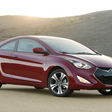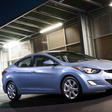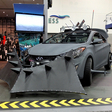You can login to your account or create a new account.
You can login to your account or create a new account.
You can login to your account or create a new account.
Hyundai presented a renewed generation of its compact sedan Elantra at the Los Angeles Motor Show 2010. Part of Hyundai’s program to present 7 models over 24 months, the Elantra was the fourth model to be presented after the unveiling of the new Tucson, Sonata and Equus.
In terms of design the Elantra is an evolution of design cues found in the Sonata. In the US market all the sedans have a distinct silhouette as well as Day Light Opening and the Elantra makes no exception. The flowing lines found on the Sonata are brought to the new Elantra, adding to it a strong undercut feature line starting at the front door. It also features muscular wheel arches and a sleek roofline. Thanks to these flowing lines the Elantra also presents good aerodynamic values, with a drag coefficient of 0.28. The front fascia is dominated by the hexagonal front grille. The car was designed at Hyundai's North American Design Center in Irvine, California.
The new Elantra is powered by a new 1.8-liter Nu four-cylinder engine with 148 horsepower and 178Nm of torque. The engine substitutes the 2.0-liter Beta engine, featured on the last generation Elantra. Compared to the Beta engine the new engine achieves an 18-percent improvement in highway fuel economy and a 30 percent reduction in hydrocarbon emissions.
The 2011 Elantra can be equipped with a six-speed manual (M6CF3-1) or automatic (A6GF1) transaxle with SHIFTRONIC manual control. The Elantra is Hyundai’s first model in the small car segment to be equipped with a six-speed automatic.
Hyundai





